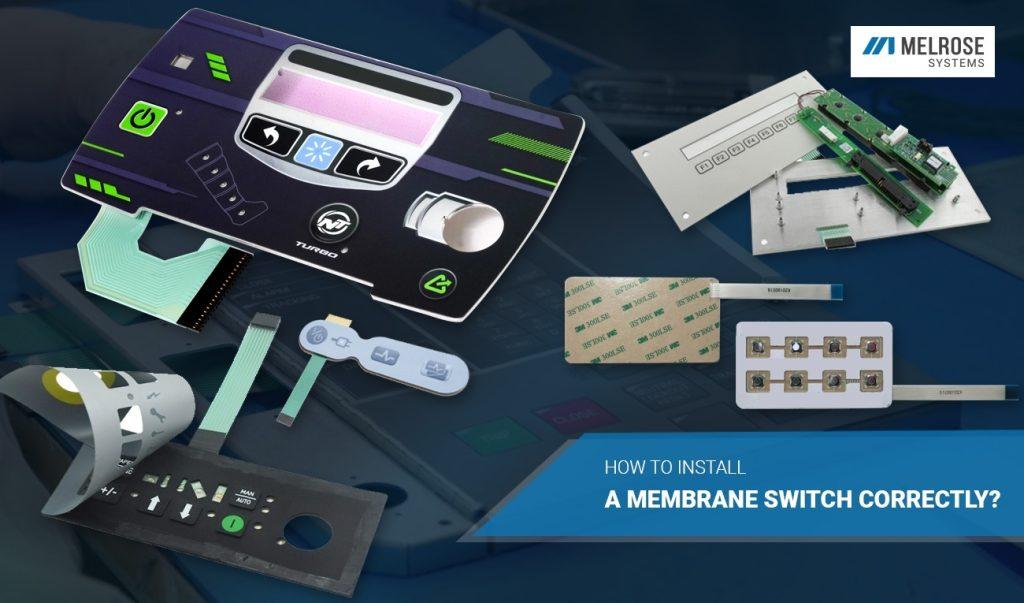Technical Solutions Through Expertise & Partnership
- Home
- ›
- How to install a membrane switch in 6 steps?
How to install a membrane switch in 6 steps?
Installing a membrane switch correctly is critical to making the most out of your investment. In this article, we go over every single installation step to ensure that your engineers don’t accidentally damage the switch while installing it in your unit.
Correct installation is critical to achieving the right effect with the membrane switch and getting the most value from your investment. Here is a brief overview of how to install a membrane switch correctly. You can also download the pdf file for step-by-step installation guidance.


Step 1
Take a look at the bottom side of your membrane switch. This is where you’ll find the adhesive liner. Carefully cut and remove ⅛” of the adhesive liner.

Step 2
Now turn the switch over. You need to find the tail exit slot of the unit to which you’ll be mounting the switch. Once you locate it, it’s time to pass the flex cable through it. Make sure that you’re precise when doing that. Now position the membrane switch on the back support recess. Adhere your switch to the unit’s surface with the exposed adhesive.

Step 3
Now position the membrane switch with an angle of c. 30 degrees. At this point, you need to peel the rest of the adhesive liner off. Make sure to keep the setup exactly as in the previous step.

Step 4
Now carefully and gently laminate the switch. Start from the side where you’ve removed the adhesive liner. For the best results, use a soft roller and apply slight pressure when rolling it across the top surface of your membrane switch. While you’re rolling, reduce the angle to 15 degrees.

Step 5
As you’re rolling, start lowering the angle of your membrane switch gradually. Do that until you complete the lamination.
Note: Don’t bend the circuit or domes at this point. Make sure that you keep a minimal angle in front of your roller. This will help you complete the lamination and avoid air bubbles from forming in between the switch layers.

Step 6
Well done, the lamination is completed! You can now bend the circuit slightly without causing damage to the switches. But make sure that you’re extra careful. If the metal domes or buttons become inverted, they will no longer be functional.
Once it’s in place, don’t lift or reposition the membrane switch. By doing that, you might invert the domes/buttons and render them nonfunctional.
Important note: When positioning the flex tail to create the final electrical connection, avoid creasing the cable. This might change the resistance or – in the worst-case scenario – break the electrical contact altogether.
Get high-quality membrane keypads
Melrose is a leading Membrane switch and Keypad manufacturer in the United States, building on decades of experience in the sector and the know-how of our talented engineers. The experts from Melrose know how to integrate components to create certified membrane switches for applications in the most demanding environments, from medical and military to the aerospace and Industrial sectors.
Get in touch with our advisors to design and develop a quality membrane switch that matches your specifications.







